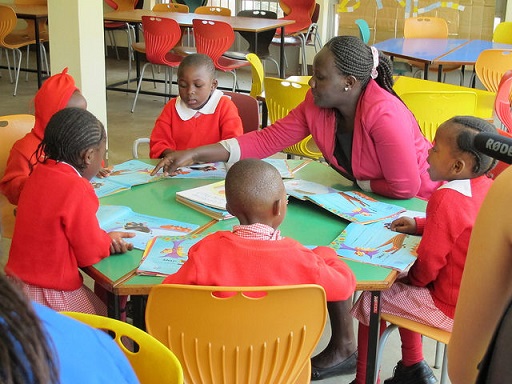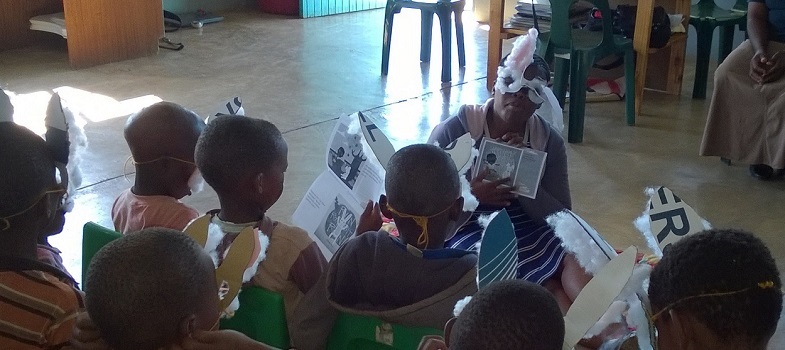Looking at effective teachers of reading

Activity 1.7: An example of good literacy teaching
Part 1
Teaching literacy effectively requires a considerable range of skills. As you read the next case study (Case study 1.2), write down:
- all the things that the teachers do to support literacy
- what the children actually did in the lesson.
Case Study 1.2: An example of good literacy teaching
The Grade 1 teacher Juba was talking at the end of the day with a colleague Tabitha.
Part 2
Having read the case study, can you identify which parts of the lesson you already do? The children’s active participation in the lesson provides informal opportunities for the teacher to assess the children’s early reading development. Record in your study notebook one area of assessment that the teachers could choose to focus on.
Answer
Both the children and teacher learned a lot in this lesson.
The teacher:
- talks to a colleague to reflect on her experience and share ideas for improving the lesson
- invites someone from the community into the class to help her
- creates the opportunity for children to talk and share ideas
- encourages the children to think of and use physical actions to match the words they had chosen
- encourages children to think of new words that they could act out
- uses resources (proposing another story and planning to bring in a box)
- chooses a context for the activity that is familiar to children
- selects an activity that combines top-down and bottom-up approaches to reading
- informally assesses the children throughout the lesson.
The children:
- are all included
- listen carefully to each other
- think of different words
- make up actions to match their word
- use rhythm and rhyme
- talk with each other
- enjoy the lesson
- are actively engaged in their learning
- can make links with prior home experiences of storytelling.
This culturally relevant activity enabled all children to be actively involved and engaged, and we can imagine how much the children would have enjoyed this type of reading activity.
Something to think about: In your own teaching, how often do you do any of the things that teacher Juba did? What are you teaching next week? Which of these strategies could you use to make the lesson more enjoyable, help children learn to read more effectively, motivate children to want to read, etc.
Case Study 1.2 illustrates some things that teachers can do to support early reading. The prospect of being responsible for teaching a large class of young children to read can be very daunting. But if you talk it through with colleagues break it down into simple steps, it becomes more manageable.
A question of language



